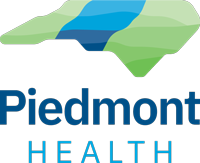If teamwork can win basketball games, why can’t it provide better health care? That’s the basic philosophy of a new approach at the Moncure Community Health Center known as “team-based care.”
In May, Moncure’s new Focused Care Team began a new approach that aims to provide patient-centered, proactive care in a way that elevates the role of each member of the clinical team to play a more integral part in the care of the patient – sort of like a basketball team drawing up plays that utilize every player.
“Team-based care focuses on the patient’s health by involving an entire team so that it’s not just provider-lead,” explained Dr. Cyndy Weeks. “It’s elevating the role of the RN to help manage and optimize the care of our patients with the chronic diseases. It’s using our medical assistants to address preventive care needs, and our patient care coordinators are providing more outreach to patients as well to make sure that we see them promptly after a hospitalization or emergency room visit.” The approach is a pilot program that Piedmont Health hopes to eventually expand to all of its community health centers, said Dr. Melissa Gilmer-Scott, another member of the team.
“It’s the future way of seeing patients effectively and efficiently but we’re actively sorting out how it can be done,” said Gilmer-Scott. While everyone is happy with the results so far, it does require rethinking the way doctors operate, she said, adding with a chuckle: “You have to kind of get out of your box.”
The approach has been around for about 8-10 years. Moncure’s providers looked at several other clinics that have successfully implemented the approach as well as some national models. “We looked at those models to make sure we didn’t reinvent the wheel,” Gilmer-Scott said.
At Moncure, the program initially is targeting patients over 60, Weeks said, because of the growing numbers of those patients and the greater number of medical issues they have.
Other team members include Brenda Spach, a family nurse practitioner; Alberta Baker, a registered nurse; Jasmine Johnson, a dual trained medical assistant and patient care coordinator; and Karen Geisler, pharmacist.
Weeks and Gilmer-Scott explained how the approach works in a real situation: Johnson checks records for hospital discharges and emergency room visits at a local hospital each day; she contacts each patient and schedules a follow-up visit with their provider and collects the clinical summary from the hospital visit so when the patient comes in for their appointment, the provider seeing the patient will already be fully informed regarding the care provided, laboratory and imaging studies performed and newly prescribed medications. Baker may assist the patient by clarifying new treatments and medications or may help initiate additional home health needs that will optimize the patients care. She may further incorporate the skills of Geisler to review the medication list for potential duplications or harmful interactions.
“It’s like coming in to see your doctor and she is totally ready for you and knows exactly what has happened to you,” Weeks said. “The alternative is, your provider walks in and she says, ‘How are you doing’ and 10 minutes into that conversation she finds out you were in emergency room, asks you what happened and you may not even be entirely sure.”
Doctors also have more comprehensive information on a patient before seeing them, Gilmer-Scott explained. “Normally that would be a visit in which we would just be taking care of the ‘now,’ but now we can see whether they’re up to date on all of their vaccines and other measures like tetanus shots or mammograms.”
That information might allow doctors to provide care in one visit that normally may have been postponed to a follow-up visit – and patients often delay follow-up visits or skip them altogether, Gilmer-Scott said.
The new approach requires the team to think more broadly about care doctors provide, Weeks said. “Physicians have to start thinking, ‘Who else might help provide needed services to assist with this patient? Who else can make a difference in breaking down barriers to access or assisting with medication adherence or assisting with financial services or in home health care. If we have everybody working toward the same goal we know that our outcomes are a lot better.”
“It allows providers to share the care responsibilities for the patient,” Gilmer-Scott added. “I think that’s the winning aspect with team-based care – every member of the team asks the question, ‘Is this something I need to do or is this something that someone else can do better, can do more efficiently?’ ”
Gilmer-Scott gives the example of treating a patient with memory issues: She can ask another team member, “ ‘Can you look up memory games so they can start doing something at home.’ That would have been something I would have been doing at 10 o’clock at night at home and would have not given the information to the patient until the next day”
Weeks and Gilmer-Scott say results have been good so far. The greater role for staff members “elevates their job satisfaction tremendously,” Weeks said. “They are truly playing a vital role in that patient’s health and they understand that they are making a difference. I think they find a lot more joy in the work that they do every day.”
Team-based care puts Piedmont Health “ahead of the game” for changes being considered that would tie health-care reimbursement to the level of quality of patient care, Weeks said. “The whole goal is that we better manage patient’s care so that going to the hospital is less necessary because our patients are healthier,” she added. “Patients are happier and it saves money.”
